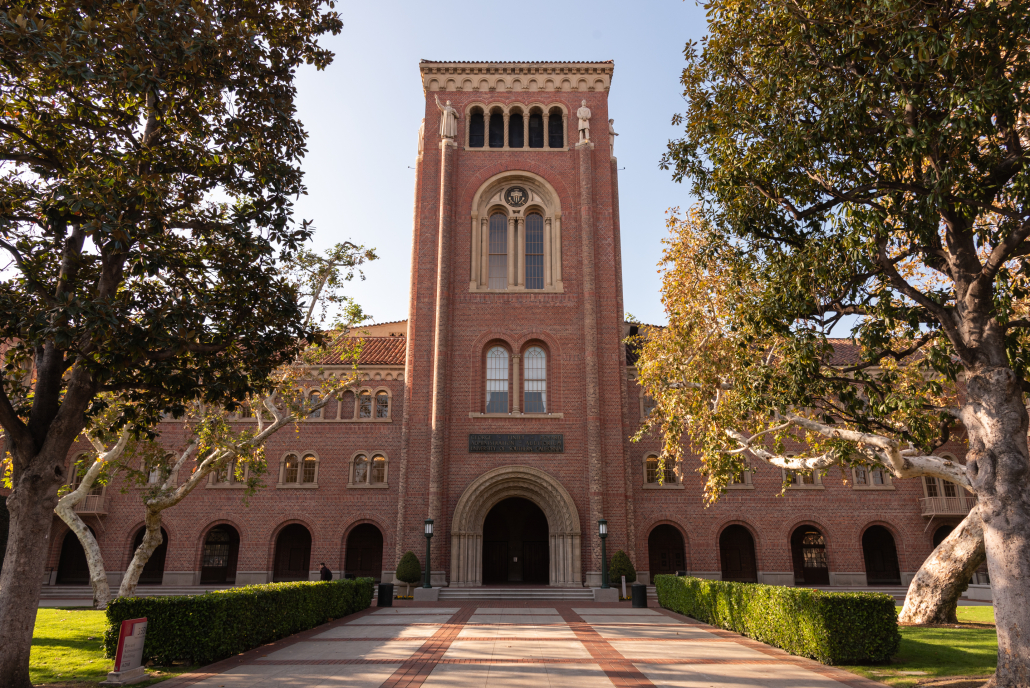The sky has to be the limit for Gen-Z
USC admission for Fall 2021 was highly competitive and selective. As a result of the large and talented applicant pool, USC’s admission rate dwindled to 12%. Declining acceptance rates highlight one of the many difficulties Generation-Z faces.
The advent of social media is another hallmark unique to Gen-Z. While interconnectedness has its benefits, social platforms also act as discouraging and negative energy sources. Furthermore, Gen-Z college graduates are entering an increasingly competitive job market. This means they will likely need to pursue various internship and research opportunities to load up their resume.
Because of these rising academic practices and social interconnectedness, Gen-Z lives in a toxic and stressful environment, which is burdensome on mental health. It also impedes both academic and social development, which is concerning because they are the future leaders of this world.
Anyone born between the years 1997-2012 is considered Gen-Z, meaning the older end of that age range is between 18-24. This age range is typically when students apply, attend and graduate college. Again, college acceptance rates have been on the decline for the past 11 years. Let’s take a look at the numbers.
In 2010, USC received 35,794 applications and yielded an admit rate of 24%. In 2021, USC received nearly 71,000 applications and yielded an admit rate of 12%. The volume of applications has doubled. Consequently, the acceptance rate has been cut in half.
Unfortunately, the increasing selectivity makes the college application cycle more toxic — students deal with rejection and do not receive the opportunity to study where they desire.
The price tag of a college education continues to rise as well. In 2009 and 2010, USC tuition amounted to $39,183. This year, tuition is a whopping $60,446. The rising cost of education also lends itself to increased student debt. The national average undergraduate student debt was $15,590 in 2010. Forward to 2020, that number sits at $36,635. If they want a degree, Gen-Z students have to pay a costly price and prepare for student debt.
However, deciding whether to pursue a degree doesn’t feel like a choice anymore. In a study conducted in 2018, researchers found that 9 out of 10 new jobs are going to those with a college degree. Without a degree, one would be facing staggering odds of succeeding in the job market.
In addition to dealing with academic and career obstacles, Gen-Z has dealt with social media’s emergence since they were children. Twitter came to fruition in 2006, Instagram launched in 2010 and Snapchat was released to the masses in 2011. Gen-Z was between the ages of 5-14 during this period.
While social media has revolutionized marketing and made the world more interconnected, it has also led to an increase in mental health concerns for Gen-Z. A survey found that 48% of Gen-Z feel a negative psychological impact from social media, such as anxiety and depression. Social media allows us to see what everyone is doing, opening the pathway to compare ourselves to our peers.
This is a dangerous trail to tread because it is easy to start using these comparisons as metrics of success, whether it be about body image or academic success. Consequently, we face exacerbated levels of imposter syndrome, depression and body dysmorphia.
Social media also makes information quickly accessible. News from across the world spreads in seconds. News of mass shootings, climate change and terrorist attacks reach our fingertips immediately.
Compared to past generations, Gen-Z is more distressed when they see these issues in the news. This signifies that these issues matter to them and they can empathize with those in pain. However, constantly feeling responsible for each issue can cause tension, anxiety and depression.
So, how should society help Gen-Z deal with all these challenges that are seemingly on every front?
For starters, elite universities, such as USC, should start accepting more students. The classic counter to this argument is that if exclusivity decreases, quality decreases as well. This is not necessarily true.
The University of Michigan has increased its enrollment by 35% since 1990 and remained in the top 25 schools in the U.S. News & World Report rankings. In Canada, the top three universities — The University of Toronto, McGill University and the University of British Columbia — combine for more than 150,000 undergraduate students. That is more than the top 18 U.S universities in the U.S. News & World report combined.
These universities all demonstrate that education quality does not decrease as volume of students increases. Increasing enrollment would allow for more Gen-Z students to receive higher education while stressing less about college rejection.
In regard to opportunities, making college more affordable matters just as much. Universities can start making progress by shifting financial aid from merit-based to need-based.
A study from 2006 found that over 25% of merit-based financial aid went to students in the top income quartile. This takes away from students who need financial assistance to attend college. Altering aid distribution would be a great step in alleviating financial tensions for Gen-Z and the generations that follow.
Finally, dealing with social media can be tricky, especially when staying off these platforms can easily make us feel FOMO — fear of missing out.
However, it is worth it sometimes. Social media detoxes can be beneficial for reconnecting with the physical world and focusing on yourself. A study also found that heavy usage of social media and digital devices can negatively affect sleep. Therefore, taking a break from these platforms will improve our sleep, and who doesn’t love sleep?
Implementing each of these solutions is necessary. Universities must adjust their financial aid and acceptance rates to combat this toxicity. Gen-Z also needs to self-manage their social media habits to help purify the environment that they currently experience and that following generations are in line to enter.


